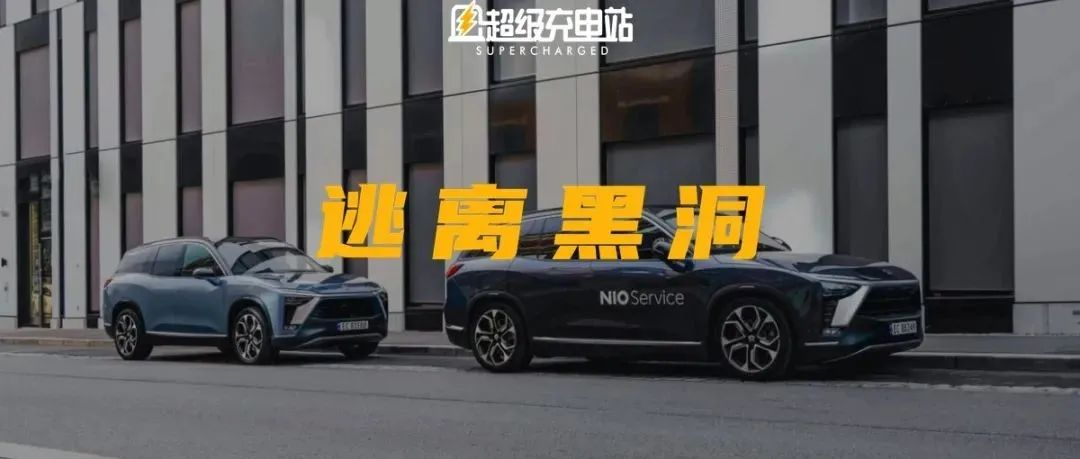Author: Chang Yan
NIO, a brand that always stands at the forefront of the development of electric vehicles in both the East and West.
From a Western perspective, NIO is a thoroughbred maverick that has created an elusive Chinese mythology beyond just making “cars.”
In the eyes of the Chinese, NIO seems to be one of its kind, and its designs in “service” and “energy supplement” have become a standard entry-level for new forces crossing the threshold.
However, no one really understands NIO among those who are in the race to compete, while there are no true competitors to NIO to compare with.
The questions of whether and how to benchmark and whether or not they can catch up are like the phases of the moon and the tides, cyclically appearing before us.
Whenever NIO makes a breakthrough, the voice of praise overflow with the NIO model. And once NIO encounters setbacks, the wave of questioning returns.
As the fifth anniversary of NIO Day is approaching, it is time for NIO to take the stage and finally tell everyone what NIO is.
Jigsaw
Flexibly swappable battery, in the entire release event, seems to be more important than everyone realizes.
Before talking about NIO’s overall competitiveness, there was a dedicated display session for flexible swappable batteries. What’s even more interesting is that after Dr. Shen Fei finished his speech and returned to his seat, Qin Lihong made a rare callback before his speech.
The original words were: “Maybe the last page of Dr. Shen’s speech didn’t attract enough attention.”
Soon, Qin Lihong gave his own standard answer for “deserves attention”: “This is the last piece of the puzzle for our giant territory.”
Previously, swappable batteries for NIO were more about technology and functionality, but this time, NIO wants to say that it is a system and capability.The system and capability not only externalizes the previously recognized advantages of NIO’s selection, but also internalizes the complete doubts about the entire solution that have been answered for a long time.
The design of interchangeable batteries for bicycles has been accepted by everyone after three consecutive models of NIO vehicles have been launched, because it reduces the one-time payment amount for users through convenient financial plans when purchasing a car, provides fast charging speed during use, and offers opportunities for users to upgrade to larger capacity batteries throughout the vehicle’s life cycle to extend its usable period and sustainable range.
All of these have gradually become consensus.
However, with the advancement of technology in the entire industry and the expansion of NIO’s user base, negative discussions about the battery swapping path have gradually formed three factions: first, as fast charging technology advances, the efficiency advantage of battery swapping is not significant; second, battery swapping has not yet solved its applicability to some scenarios, such as long-distance and high-speed travel; third, more battery swapping stations mean more batteries, which are additional costs.
Flexible battery swapping is a systematic answer to these three issues.
With two scenarios, everyone can easily understand the meaning of flexible battery swapping. A user living in Beijing wants to go to Tibet and may want to use the largest capacity battery available at each station on this long journey. Similarly, a 100 kWh battery pack owner who is in a hurry and arrives at a 70 kWh battery station fully charged may also want to temporarily bring a small battery pack and leave quickly. These are typical scenarios for flexible battery swapping.
Flexible battery swapping allows vehicles to break free from the previous battery swapping logic locked in by model specifications, meaning that all previous strong associations have become user behaviors after dynamic synthesis. What is really being tested behind it is macro-level scheduling capabilities, resource reserves, and network layout.
Shen Fei pointed out that network scale and intelligent algorithms are the hardware and software foundations that support the evolution of battery swapping capabilities.The scale determines the range of elasticity of the battery swapping capability, while algorithms maintain a reasonable degree of network usage. For example, by statistically analyzing charging behavior and frequency, NIO can achieve an increase in charging capability at key locations by coordinating the rapid charging capability, battery swapping, and energy storage system in the battery swapping network. When the nearest battery swapping station to a user does not have a suitable battery pack, NIO can transfer a battery pack to that station through reward points obtained through normal battery swapping behavior. Under the dynamic algorithmic scheduling, the number of idle batteries in the entire system has decreased, even approaching a zero inventory state, which has also solved doubts about battery resource occupation.
This case demonstrates the common effects of NIO’s car, network, service, and digitalization aspects, particularly in terms of the feasibility of its competitive power through flexible battery swapping.
Black Hole
The term “black hole” has become a joke that I frequently use this year. There are intellectual black holes in learning, traffic black holes in writing, and luck black holes in hiring. The more we use the term, the more it shows that there is a black hole that is constantly devouring us. Of course, the “black hole” referred to here is more of its sociological significance rather than its astronomical one.
The “black hole theory” concept was mentioned by Qin Lihong during the Q&A session at the end of the presentation. Strictly speaking, it can only be regarded as his professional experience rather than a classic knowledge in business. However, maybe because I am anxious about our own small team growth, “this became the part of the presentation that I wanted to share the most with people.”
Excerpts from his speech include:
-
“We believe that a product, a generation of technology, and a community are the same as a natural person. From the moment of birth, they will constantly experience aging, and a company, a generation of products, and a community all have this problem.”
-
“In the world of brands, there is a black hole. When you do nothing, there is a force that constantly pulls you towards mediocrity, aging, dilution, and extinction. This black hole really exists. How to constantly do new things to escape from the black hole is what enterprise management and business operations need to do.”
-
“What we need to do is to ‘fight aging.’ The probability of rejuvenation has become smaller, of course, some companies have achieved it. Jobs’ return to Apple is ‘rejuvenation,’ but we think that if we can do a good enough job of anti-aging in normal operations, that would be great.”- “From an organizational perspective, NIO wants to establish a value-driven team, but we cannot guarantee that the promotion and inheritance of values are 100% effective. According to founder William Li, when NIO has tens of thousands of employees, having 30% of them as firm supporters and practitioners of the company’s values would be gratifying, as this represents the anti-aging process from 100% to 30%. We hope this process can stay longer at the 60% stage. These words tell us what the driving force and purpose of the company’s growth are. The fundamental needs are the company must innovate and grow to ensure that it does not fall behind in the face of others’ growth. The middle needs are that the company’s innovation needs direction, which is a value judgment. The top needs are that this value should be long-term stable and inheritable to ensure the sustainability and accumulation of the company’s innovation direction and energy. Two examples can better explain this point.
For example, Qin Lihong admires Tesla and Elon Musk’s courage and dedication to establishing a direct sales model, “It is not about going to Mars, but the courage and investment shown in building a direct sales model. Exporting a batch of cars through a dealer is not the truth. The essence behind direct sales is the relationship between the brand and users.” This system and persistence in the business model formed Tesla’s sustainable leadership in brand recognition and delivery capabilities in the future.
Another example is that William Li is now almost a symbol and pioneer of NIO’s user service, spending at least 30 minutes every day sending red envelopes and communicating with users. The problem is, when there are more users, when William Li is busier or when he has less energy, how can NIO maintain its service label? The answer is to “create 5,000 more William Li’s within the organization. It is not about having 5,000 CEOs, but having 5,000 people who take responsibility for handling user services and managing the entire user lifecycle, and it can all be quantified in terms of money and actions.”
The black hole theory explains the necessity of discussing NIO’s competitiveness in the system.
Compass. Originally, all the words in this article should be included in this section, but I think it becomes particularly simple and easy to understand if you can empathize with the existence of the first two sections. After all, everything that NIO wants to do, is doing, and to be done has already appeared in our lives in the form of actual products and services. Therefore, there is no need to give the answer at the end. The competitiveness of NIO’s system is this compass.”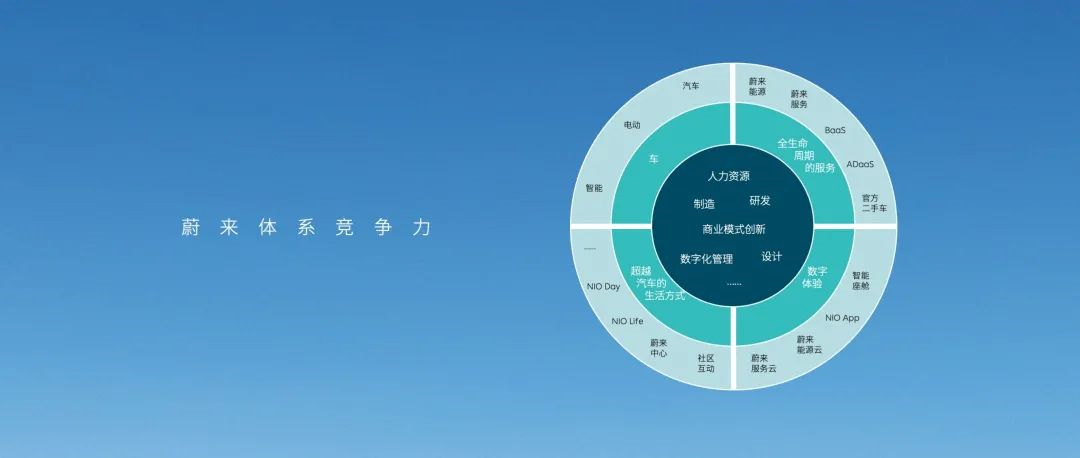
Two intersecting lines, one horizontal and one vertical, here have a double meaning.
The first meaning is the segmentation of time and space dimensions.
For a car company, the starting point for all issues must be the car; however, at different time points, people’s understanding of the attributes and characteristics of cars, beyond mere mobility, has become the final differentiation point that determines the value of different companies.

It could also be said that human technological progress has created dual value. For the world before the technology appeared, the new technology simplified the difficulty of implementing quality and improved the efficiency of production. Simply put, things that were done well before became more and more certain. For the world after this technology emerged, the new technology also stimulated new user demands, leading to competition between different car models and brands entering a new arena.

Therefore, NIO believes that the development of cars has gone through three eras of brand versions. In the 1.0 era, the core competition between brands was in hardware, including both the hardware of cars and the hardware used to manufacture cars. The quality of cars and the cost reduction and scale increase achieved after improving production efficiency became important foundations for brands in the 1.0 era. In the 2.0 era, brands competed with each other using the internet. “Just having a car is no longer enough.” The key point of the car industry experience gradually shifted from the car itself to the in-car intelligent technology.
In the 3.0 era, cars began to help achieve “differentiation between people”. Cars are products that carry personal users, lifestyles, and self-value positioning, and have become important consumer goods for individual users’ lifestyles and personal positioning.
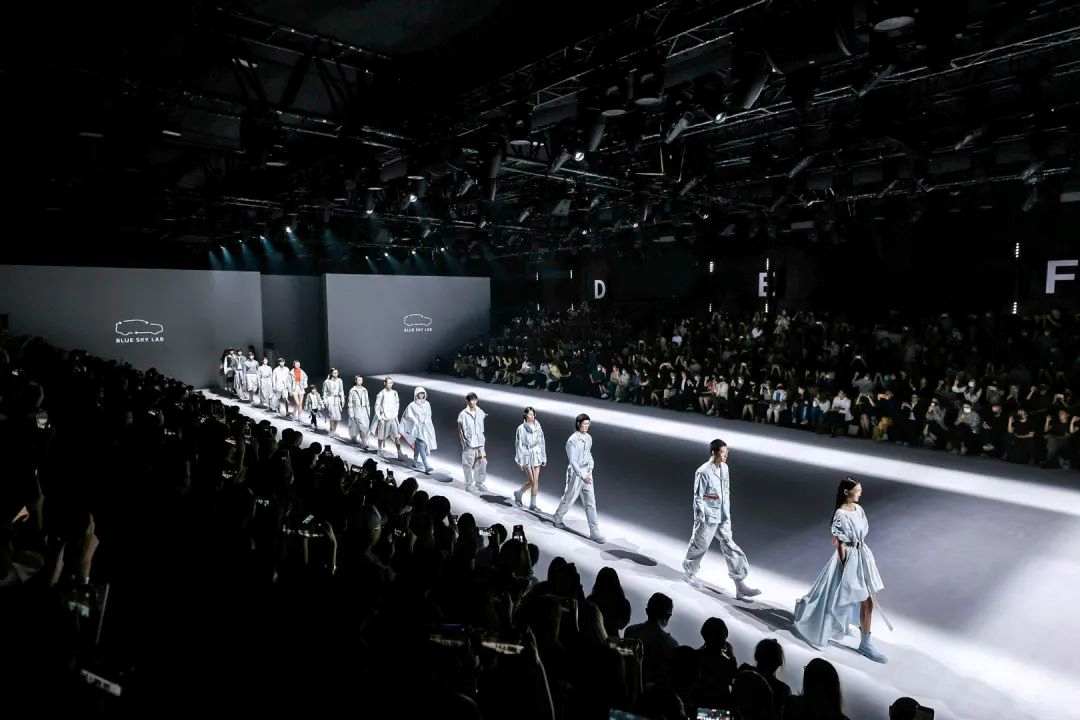
Note that the progress of each version is not based on the negation of the core value of the previous era. More importantly, it is to do well in the core abilities of the previous version and constantly explore new capabilities.
This brings us back to the second meaning of the compass previously mentioned, NIO’s definition of the four quadrants.
These four quadrants are how NIO ensures that they will not be faced with difficult challenges in the future, whether it be in 5, 10 or 20 years.
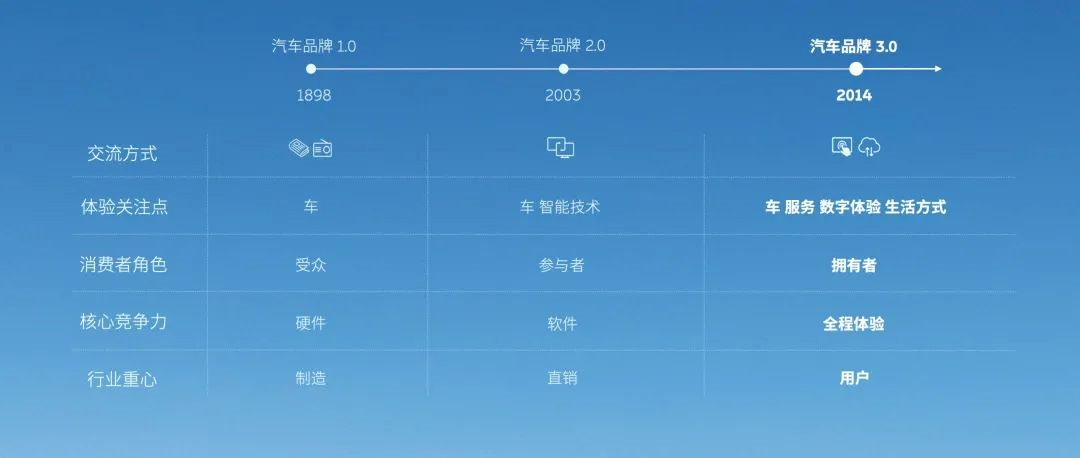 Here, the so-called challenge does not refer to other car brands.
Here, the so-called challenge does not refer to other car brands.
When discussing the long-term competition pattern in the automotive industry, Qin Lihong made two basic judgments. First, in the 10-20 year cycle in the future, the biggest competition pattern is not the competition between different electric vehicle brands, but the competition of electric vehicles as a new thing against traditional fuel vehicles at a higher level. Second, even in the 3.0 era, the automotive industry is not a winner-takes-all industry. This is determined by the characteristics of the automotive industry, such as manufacturing and logistics. Therefore, the market share of the first place is only slightly more than 10%, and “the core question we as a company need to answer is not to grab someone’s market share, but how much percentage can we occupy in this market.”
Therefore, what NIO needs to do is to continuously establish NIO’s characteristics and strengthen measures to enhance these characteristics.
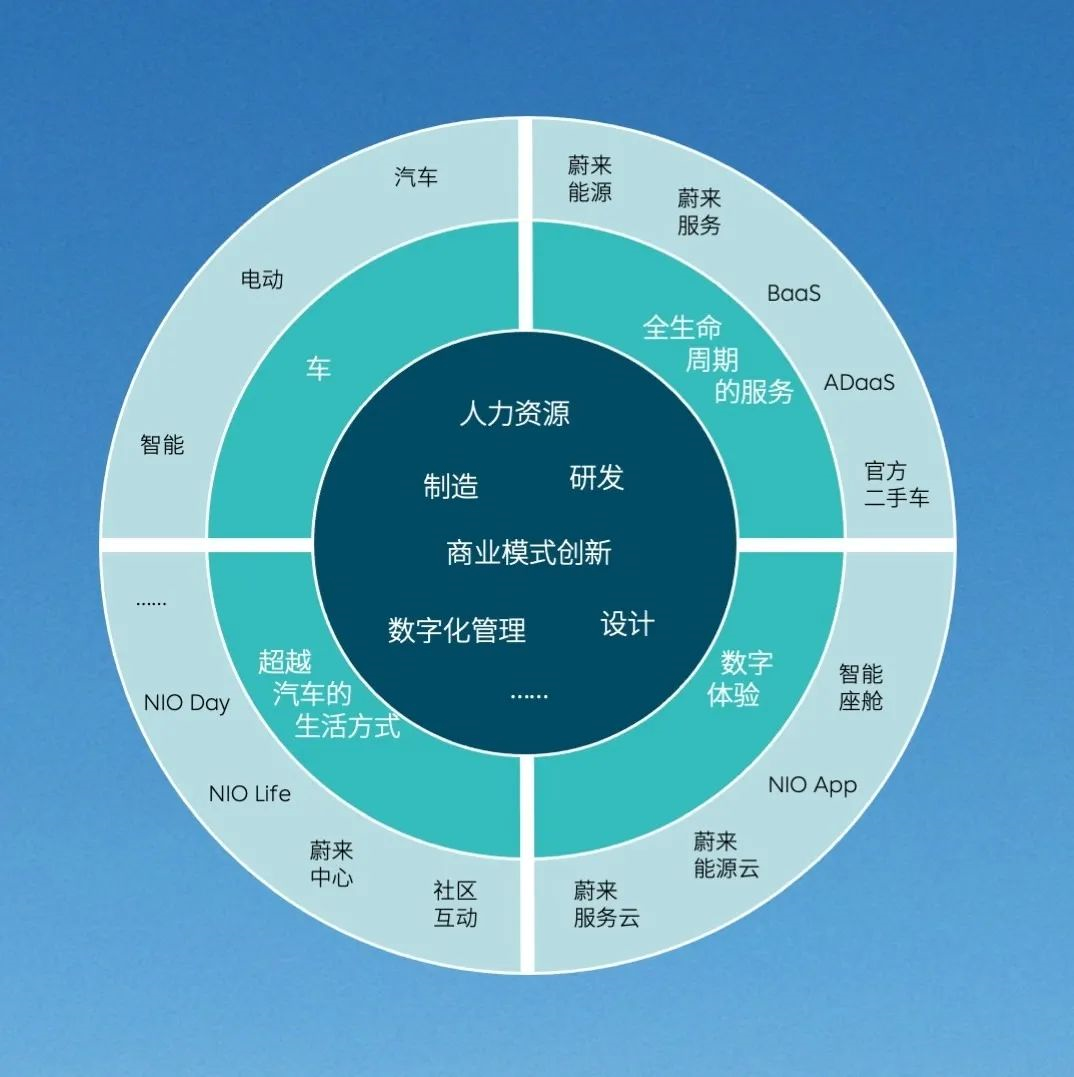
These four quadrants are car, service, digital experience, and lifestyle.
It is recommended that we focus on the content of each sub-segment around the compass image above. I believe you will easily understand the content and corresponding functions of each part.
At this point, if we return to the dimensions of time and space mentioned earlier, you will find that what NIO does at each specific time node is exactly classified into the above-mentioned space and time dimensions.
In the spatial scope, all the things that NIO does constitute the lifestyle and value perception belonging to NIO car owners and the brand. These constitute their different personalized experiences in different scenarios such as car usage, life/software, hardware/consumption, service/private, and social.

In the time range, expanding along each quadrant is an experience that runs through the “entire journey,” which refers not only to the growth experience of a single user in the personal car usage cycle but also includes the experience that NIO brand wants to consistently provide.
Okay, it’s nearly 4,000 words by now.
Still, there is one question left to be explained, what’s the use of understanding this?
Going back to the beginning of this article, we talked about NIO standing at the watershed between the East and the West.
The first two questions may have found their answers.
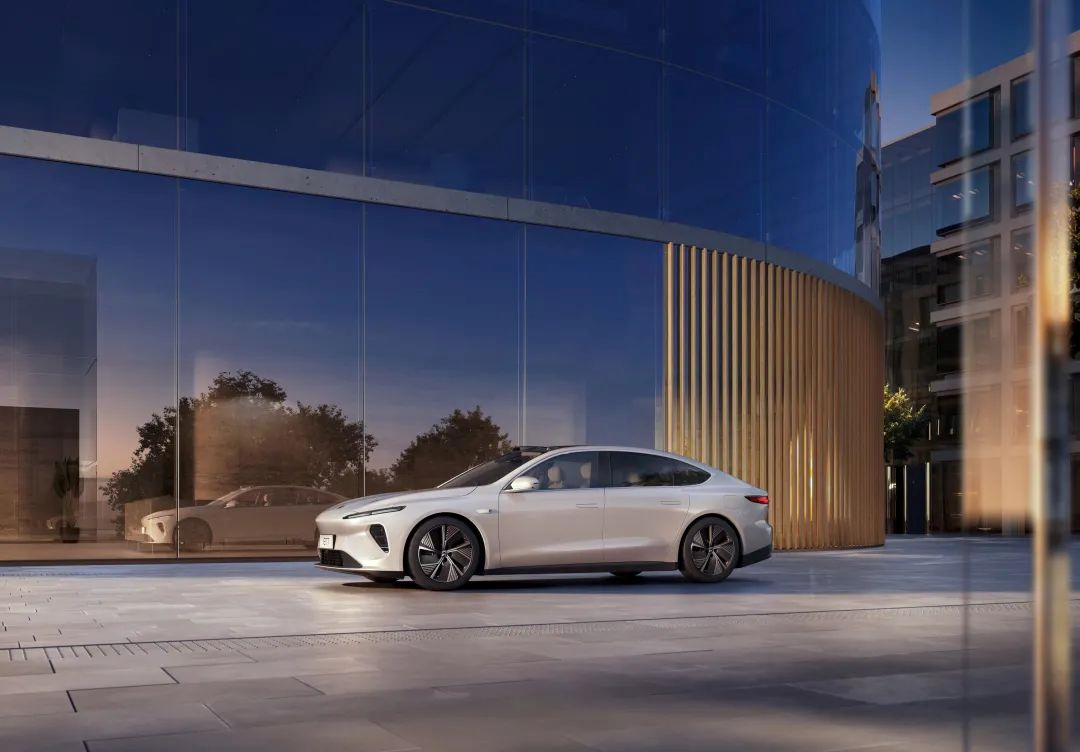
From this compass, you can understand what NIO must do and what NIO will definitely not do, together forming a unique and distinctive NIO, which serves as NIO’s moat and high wall against all other brands.## English Version
Secondly, from this compass, you can judge whether NIO is doing well or not at a certain point in time, and whether a brand that completely emulates and competes with it can achieve transcendence. The speed and balance of the four quadrants determine whether NIO can have an overall experience and not lose sight of the big picture. By choosing to benchmark NIO completely, the competing brands enter into the game of breaking through this quadrant with NIO. Whoever covers more projects and expands their strengths will win.
NIO uses this compass to escape from the black hole.
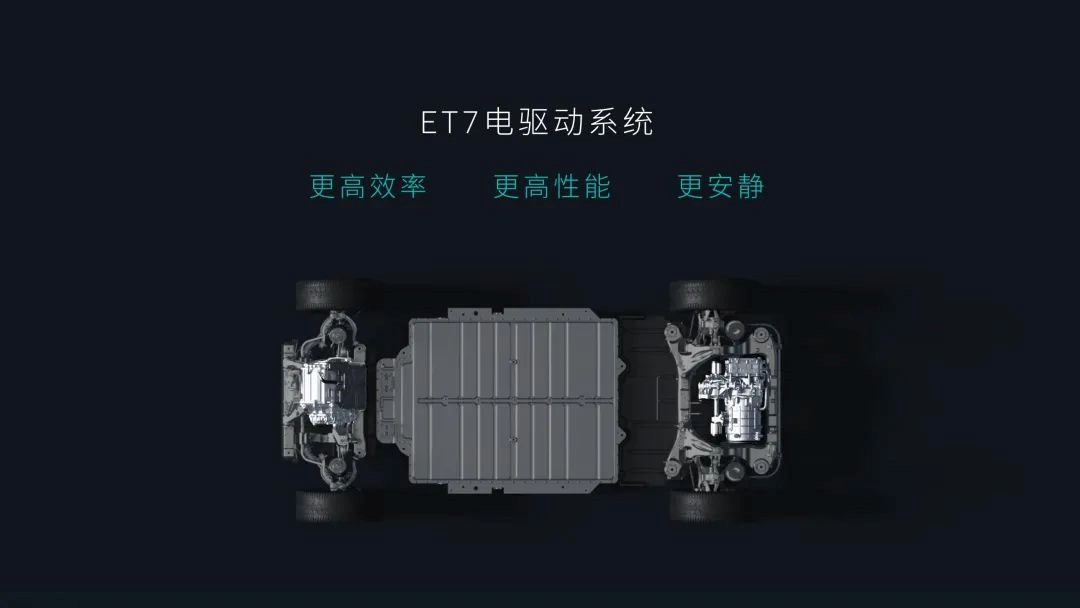
Just last night, I received the invitation for NIO Day 2021. Even if we take this purely user-oriented event as a milestone, NIO has already passed five years.
Regardless of whether NIO has money or not, whether it has cars to sell or not, whether it is praised or criticized, what is surprising is that NIO has never wavered in its thinking and efforts on the overall competitiveness of the system.
Like the two cases mentioned by Qin Lihong, the 1,100 battery swapping stations promised by Li Bin were delayed for a year and a half because NIO was short of money for a year and a half, but this goal will still be achieved; on the other hand, the Fellow organization, which everyone now thinks NIO has done well, is still far from the meaning of “lifelong companionship” when this term was defined.
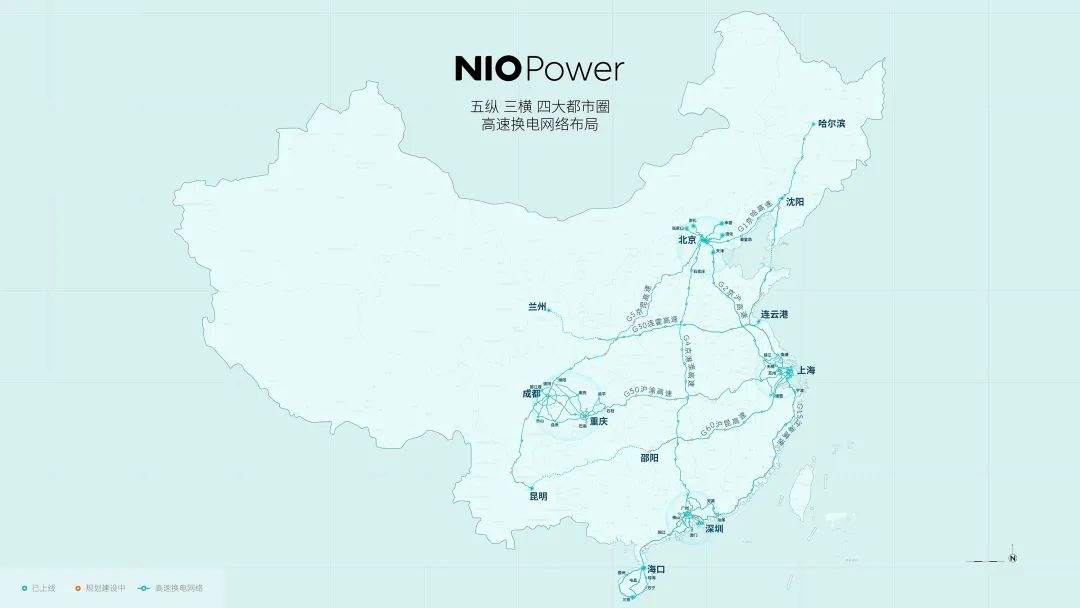
When talking about the initial brand stage classification chart, Qin Lihong introduced that: this page of the chart was first made by Li Bin, Zhou Xin, and me in 2015. It was also a page of the 8-page PPT presented during NIO’s series A+ financing, and it has not been changed since then. With very few words, it helps us recognize the driving force behind the changes in the industry, and why NIO, as a startup brand, chooses to do so many things.
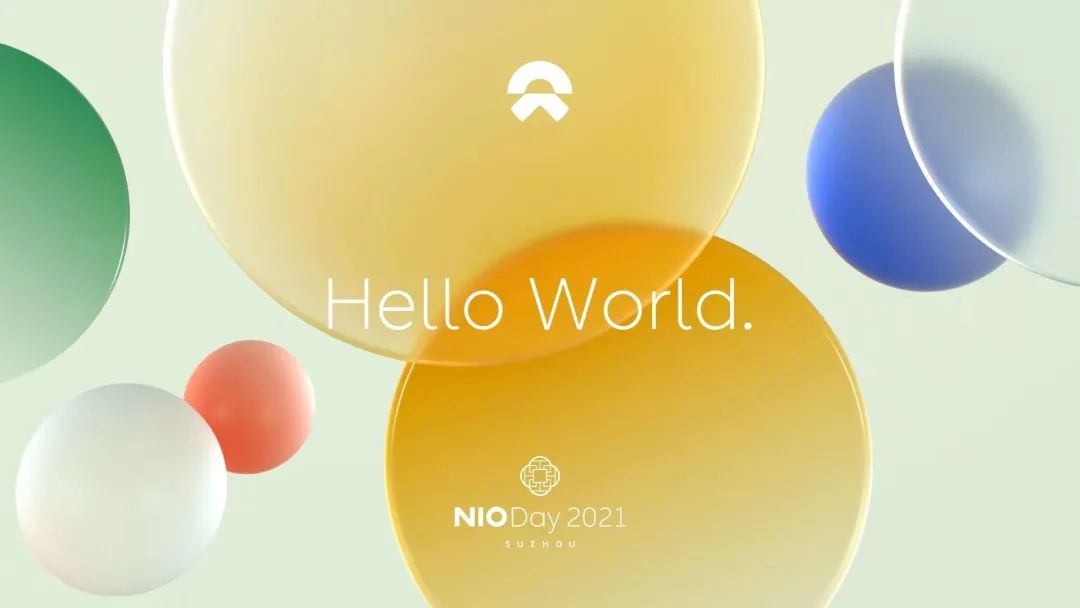
This may be where NIO began.
What’s not easy is that even after all these years, that point is still there.
This article is a translation by ChatGPT of a Chinese report from 42HOW. If you have any questions about it, please email bd@42how.com.
